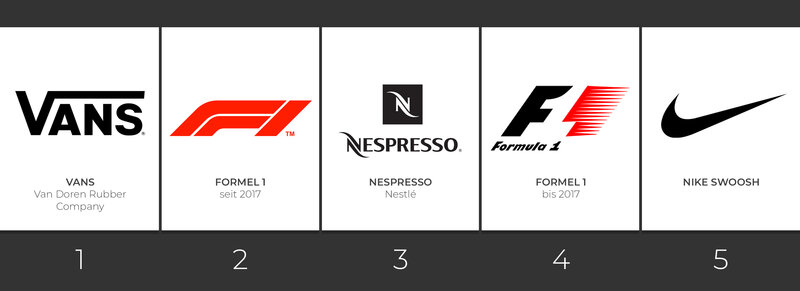
A Logo is not a Brand
What is a brand? And why do we need it, after all? How is a name conceived? How did we come up with the name Puzzle?
▽Nov. 25, 2019|Felix Kuchar
designbrandingfelix
This article is a prelude to a small series on logo design. At first, I explain the difference between a logo and a brand. Then I give you an insight into different manifestations and show where the topic becomes relevant in the development process. In addition, I also address brand naming. The end of this article includes the story of how we came up with our name.
1. Why is a logo not a brand?
Generally, there is a certain ambiguity in the use of these terms. I frequently realized that the word brand is confused with the word logo. Thus, first of all I will explain the terms briefly.
What counts among the term brand?
Most people speak of a brand when they actually mean the mere logo image, the word picture or even a product. However, a brand consists of more than just small symbols and far more than is visible.
For example, a brand includes the brand voice. How, in which way and through which channels does this company communicate with its customers?!
What feelings do customers have when interacting with the company? So broadly speaking the atmosphere when looking at or surrounding oneself with the respective product or service. This is called look&feel of a brand.
Furthermore, there is a brand impact, i.e. the influence a brand has on the customer. Your products might support the customers’ interests in a special way or they solve important problems?!
All these aspects together are called brand
experience.
Or how Marty Neumeier addresses it in The Brand Gap:
First, a brand is not a logo.
Second, a brand is not an identity.
Finally, a brand is not a product.
According to him, a brand is:
a person’s gut feeling about a product, service, or organization.
In other words, the entire customer experience with the brand, i.e. through all senses, shall give a clear picture. Hence, in the best case, provided that it is consistent with the company’s values, a brand leads to more trust and thus to longstanding customer loyalty.
What is a Logo?
As it is the case for many of today’s terms, the term logo derived from Greek. The term logos can be translated in many ways and means as much as: word, speech or meaning. However, also totems, small signs on bricks, inscriptions on swords by blacksmiths etc. were referred to as logo. You can see that the list is long.
Principally, logos already exist since the Stone Age. Then as now, they served the quickly classification into categories. At the beginning, tribal symbols were used to mark members or territories. Later on in the course of history, goods and commodities were labeled, i.e. marked with small symbols or names to be able to determine who produced them or to whom they belong. Of course also, in the event of damage, to determine who delivered poor quality or who rather stands for good service. So logos have a very long tradition.

Basically, logos are the pure form of a brand’s optical identity. They exist in all sizes and forms. In most cases they consist of a combination of:
- Word is image,
- Image of initials,
- Image in the name as an iconic element,
- Negative image in the image, or
- Only an image.
There are no limits to variation.
Logos can also be part of a picture family. For example, if they are part of an identity system. For example, every traffic sign is unique, so that it is clearly distinguishable. At the same time, all traffic signs are quite similar.
2. Brand development
To put the entire topic of logo design into perspective, first of all I address the brand development. Throughout this entire process, the logo is just a small substep. It is rather the condensed end result than the beginning. It is the cherry on the cake, so to speak. You should not start with it before the brand’s characteristics are determined or detected.
The characteristics include i.a. the company’s vision and mission, the market positioning and a competition analysis. Furthermore, attention should be paid to the USP (unique selling point), the value proposition, the brand values, the persona, i.e. the specific stereotypes of a customer group, etc.
Seth Godin asks in This is Marketing: You Can’t Be Seen Until You Learn To See
How can I market with them? Instead of: How can I market at them?
First of all, you have to determine these and many other aspects, before you can even think about the logo. At the beginning, you are still far away from the first strokes on paper or even the digitalization of the logo.
Strategy workshop
To clear up the pending questions, a strategy workshop is advisable. This is a very valuable tool to determine the future direction, positioning and brand communication for the next years. It also helps an evolving company to become clearer in its entire decision making.
For example, if you are stumped at a certain point, because too many suggestions are on the table, you can simply consult your core values that you developed in such a workshop. With their help you can quickly assess whether this or that suggestion is compatible with your values, or not.
Decisions that are compatible with these core values lead to a consistent behavior from the customer’s view. This eventually creates the trust that is necessary to be able to sell something.
Warren Buffett once said:
It takes 20 years to build a reputation and five minutes to ruin it. If you think about that, you’ll do things differently.
This is why a consistent corporate image is so important.
3. Brand naming
Apart from the logo, the name constitutes the first form of contact with the customer.
Preferably, you should not deal with brand naming before the USP is actually determined. Or before you know at least the mission and can actually tell in clear and simple words, what the company does and stands for. That is to say these are the aspects a customer sees first. Hence, potential associations contained in the name can be created in the right direction.
You could write another entire article about brand naming, since this is also a science in itself. The following questions might be helpful:
- Which problem do you solve?
- To which questions do you want to be the answer for your customers?
- What are the major aches and pains of your customer?
- What makes you unique?
- Why do you want all this?
Creative solution finding
As an old saying goes:
Appetite comes with eating!
The same goes for creative solution finding. Go into your topic completely clearly and without any prejudices. The Disney method is suitable for this purpose, for example.
During the search and discussion phase, exchange and mutual stimulation take place, ideally developing its own dynamcis. This exchange of ideas with persons from various disciplines is especially fruitful, since it reveals a much broader range of ideas and new contacts, which we could not conceive on our own. So make sure to include persons with as many different opinions as possible during these phases.
Checking results
The easiest control mechanism is to go with your gut. You can easily fail to do so, as Steven Spielberg says:
it always whispers; it never shouts.
In addition, there are also some rational indicators:
- Is the name easily pronounceable?
- Do any misunderstandings arise when passing it on?
- Does it consist of two to three syllables?
- Is it memorizable?
- Is the meaning the same in other countries or cultures?
- Which feelings or thoughts will the name provoke with regard to your application or service?
- Is the name still available online and as a brand?
It is best to use the right side of your brain, i.e. the creative and constructive side, and the left side of your brain, i.e. the rationally evaluative side, in turns during that time. Or as Ernest Hemingway says:
write drunk, edit sober.
Then you will develop a great company or product name.
4. How we puzzled out our name
At the beginning, we did not have a name yet, but rather something that could be considered as a working title, in the best case. We did not think about a real name. Thus, the first Trello board where we collected our ideas was called MPng. The next version operated under the name of ‘Digital Pockets’. A good name was simply not relevant that time.
Until we talked about the vision of an efficient payment solution one night:
- Which impact can we make?
- How would the future look like with it?
- Why does it not exist yet?
- What is missing to realize our vision?
Eventually the following sentence came up:
The missing piece of the puzzle is a universal payment system.
And we had the idea: Why don’t we call it Puzzle? Yes, why not? The gut feeling about this suggestion was good.
But what about the rational aspects:
- Easily pronounceable? Yes, since the word is already familiar.
- Misunderstandings? Few, since almost everybody has done a puzzle before.
- Short? It only consists of two syllables.
- Memorizable? Puzzle is metaphorical.
- International? Foreign word in many languages.
- Feelings? Doing a puzzle is positively associated with aspects such as game, childhood and trust.
- Available? Already reserved as puzzle.com, but still available as ‘puzzle2pay.com’.
So all in all very good and thus we had our name. The app would be called Puzzle and the company *Puzzle2Pay**. Later on we also did a more in-depth legal availability check.
However, some days later we realized that in English, to be puzzled means being mysterious or confused. What now? Interestingly enough, this is a feature we have in common with Apple. You can easily derive the German term ‘veräppeln’ (meaning to make fun of somebody) from the term Apple. Nevertheless, the company became very successful with it and turned into one of biggest brands in the world. So no need to panic, if not all indicators are met 100 percent.
Similar questions play a decisive role when evaluating the logo design. In the next article, you will learn what makes good and bad logos.